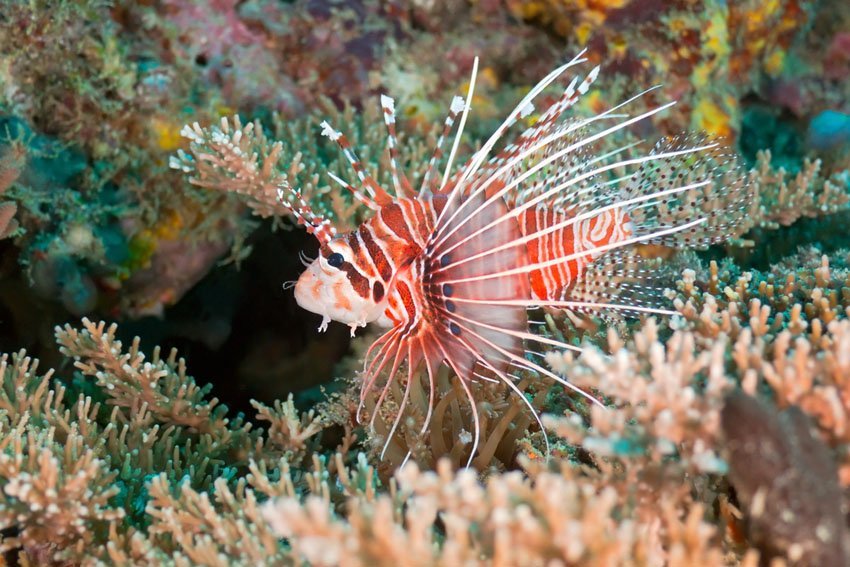Scorpionfishes

Scorpionfishes (Scorpaenidae) Overview
Scorpionfishes don't like to move around much. They are sedentary carnivores and some of them have venomous spines. Since many of them are masters of camouflage and blend in with their surroundings, it is often difficult to spot them. They usually hunt for prey at night.
Their sting is very painful and causes cramps and nausea. Since they live in the reef and are difficult to see, it's always a possibility to accidentally touch or step on one. A known first-aid treatment for scorpionfish stings is hot water. The affected area should be soaked in it for at least 30 minutes as heat destroys the venom. The victim should also be brought to a hospital for further care.
The Hawaiian name for scorpionfish is nohu. There are 28 species of scorpionfishes in Hawaiian waters, of which ten are endemic.
Frequently Asked Questions
Are scorpionfishes dangerous?
Yes. Many scorpionfishes have venomous spines that can cause intense pain, cramping, and nausea if touched. Their sting requires immediate first aid and medical attention.
Why are scorpionfishes hard to spot?
Scorpionfishes are masters of camouflage. Their coloration and textured bodies allow them to blend perfectly into coral and rocky reef environments, making them difficult to see even at close range.
When are scorpionfishes most active?
Scorpionfishes are nocturnal hunters. They remain still during the day and become active at night, ambushing unsuspecting prey like small fish and crustaceans.
What should I do if stung by a scorpionfish?
Immerse the affected area in hot water for at least 30 minutes, as heat helps break down the venom. Then seek medical attention immediately to prevent complications or secondary infections.
What is the Hawaiian name for scorpionfish?
The Hawaiian name for scorpionfish is nohu. Of the 28 species found in Hawaiian waters, 10 are endemic to the islands.








